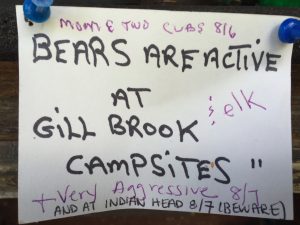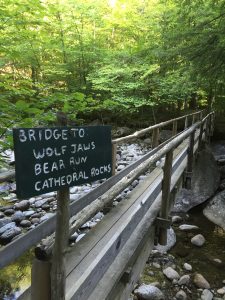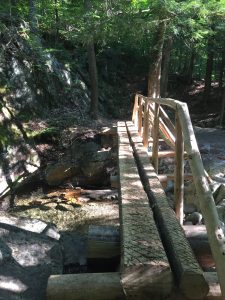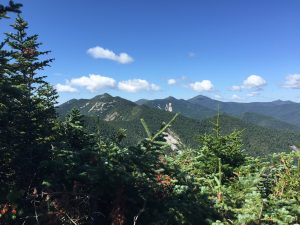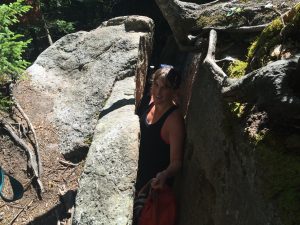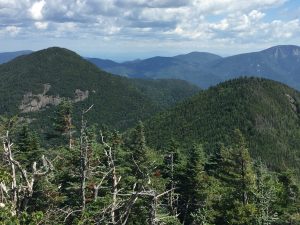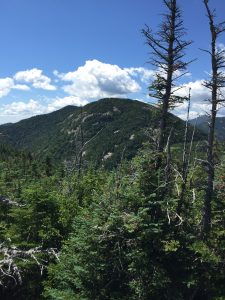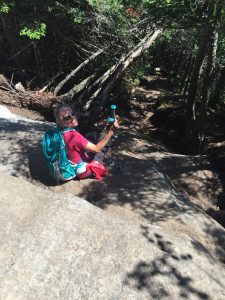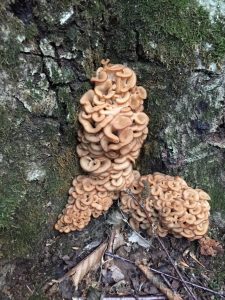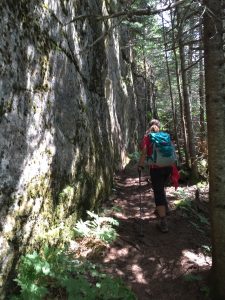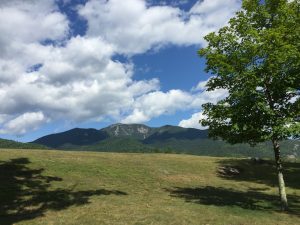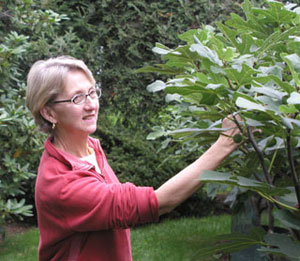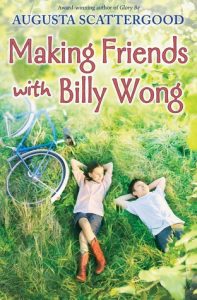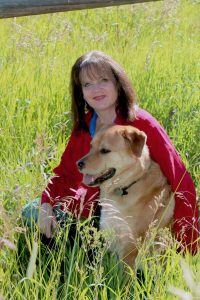UPDATE AS OF 1/31/17 – At this time, all of the schools I’m aware of have had to stop taking donations so they can catch up on moving back into buildings and processing. Please do not send books without checking first!
If you’re like me, you’ve been watching the news out of Louisiana and wanting to do more to help. When whole communities are flooded, families who have lost everything are uprooted, and that can be especially tough on kids. As a result of flood-damaged schools, many students have also been displaced from their classrooms for now, and teachers & librarians have lost books and supplies. Let’s make sure those kids have beautiful books in their school and classroom libraries when they return. The losses are devastating, and the need is enormous.
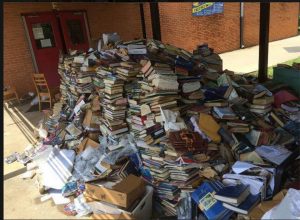
For Flooded Schools & Libraries: Here are two resources that have been brought to my attention that may be helpful to you. Check out Beyond Words, the ALA’s relief fund with Dollar General and The Lisa Libraries, which donates books to organizations that work with kids in poor & under-served areas.
For People Who Want to Help: Not all schools are ready to accept book donations right now, so donating money to this disaster relief fund set up by the Association Education Professionals of Louisiana is one great way to help.
Tanglewood Elementary lost 90% of its library books in the flood and has set up this fund for donations to help rebuild. (For libraries, this type of monetary donation is even better than new book donations because books can be selected and purchased already processed so that they’re accessible to kids immediately.)
Some schools that lost classroom libraries are ready to receive donations of new and like-new books to replace classroom libraries now. Please follow the guidelines carefully so we don’t inadvertently create more work for people who are already buried in it.
What NOT to send at this time:
*Used books, unless they’re relatively current and like new. Please do NOT send boxes of used books that have been weeded from a collection. If your classroom or family has two new copies of the Harry Potter series, and you only need one set, that’s great to donate. But please don’t send discarded books or other boxes of used books at this time. When we were working to rebuild a library in the Adirondacks after Tropical Storm Irene a few years back, we found that boxes of used books quickly become overwhelming, and many had to be disposed of. The last thing we want to do is create another job for people who are already very busy cleaning up from the floods. If this changes and there’s a need for more books, I’ll post an update here.
*Books that do not meet the needs of the specific schools to which you’re donating (and for now, those are all elementary schools). If you have YA novels to donate, please hold onto them for right now. I know of at least one high school library that lost books to the flood, and they’d love donations eventually but are not prepared to receive them just yet. I’ll update this page with more information when I can.
More schools will be added as I learn about them, but here is a start for folks who are ready to help.
Brookstown Middle School
Brookstown Middle School had as much as 5 feet of water in places. 330 students are displaced and will be hosted by Scotlandville Middle until they can rebuild. 15 classroom libraries were lost. Most students here are people of color, so diverse titles would be especially appreciated. Donations of new and like-new books can be shipped to Scotlandville since they are open and dry.
Need: New and like-new books for grades 6-8 (both MG and YA – especially diverse titles)
*Authors & Illustrators: If you’re sending your own books and would like to sign them, I think that would be lovely for students to see. You can sign “For Readers of Brookstown Middle School” or just “For Louisiana Readers.”
Send to:
Attn: Angela Rae
c/o Scotlandville Middle School
9147 Elm Grove Garden Dr.
Baton Rouge, LA 70807
Southside Junior High in Denham Springs, LA
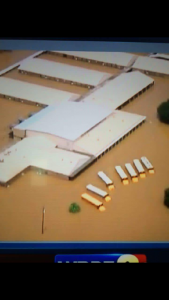
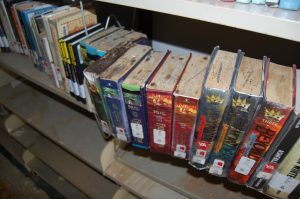
Southside librarian Lindsay Varnado shared the photos above – one showing an aerial view of her school during the flooding and one showing what her remaining library books looked like when she and her colleagues were finally allowed back in to tour the school with a HAZMAT guide. The library is a total loss, as are classroom libraries, and new/like-new book donations will be very much appreciated.
Need: New and like-new books for grades 6-8 (both MG and YA)
*Authors & Illustrators: If you’re sending your own books and would like to sign them, I think that would be lovely for students to see. You can sign “For Readers of Southside Junior High” or just “For Louisiana Readers.”
Send to:
Lindsay Varnado
Books for Southside Junior High
9111 Harris Rd.
Denham Springs, LA 70726
St. Amant Primary School in St. Amant, LA
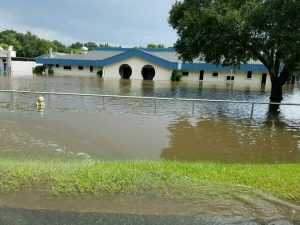
Jessica Paz, a fourth grade science & social studies teacher at St. Amant Primary School shared this photo of her flooded building, along with the news that teachers there lost their classroom libraries for grades PreK-5. They still cannot return to their school. For now, they are teaching grades 3-5 in an old community college.
“Our rooms are bare- not even everyone has a while/chalk board. We’re having to bring in items from home to improvise an environment as normal as possible. Students don’t have any reading materials for when they finish their work or when they come into class. We also do not have a library at this location, so reading books is considered a luxury as of now.” ~Lindsey Kelley, 4th grade teacher
Need: New and like-new books for grades PreK-5
*Authors & Illustrators: If you’re sending your own books and would like to sign them, I think that would be lovely for students to see when they get back to school. Either “For Readers of St. Amant Primary School” or just “For Louisiana Readers” would be great. (Some books may also be distributed to other schools in need.)
Send to:
Lindsey Kelley
Books for St. Amant
37054 Kathleen Ave.
Prairieville, LA 70769
or
Jessica Paz
Books for St. Amant
15510 Oakstone Dr.
Prairieville, LA 70769
Glen Oaks Park Elementary in Baton Rouge


The photos above are from Glen Oaks Park Elementary, where first grade teacher Aimee Manzella Lastner lost the classroom library she’s built over the past four years. Other teachers and the library have lost books as well. Aimee says the K-2 classrooms seemed to suffer most of the losses. Her school is set up at a dry temporary location now and would appreciate donations of new and like-new books for grades K-2.
Need: New and like-new books for K-2
*Authors & Illustrators: If you’re sending your own books and would like to sign them, I think that would be lovely for students to see when they get back to school. Either “For Readers of Glen Oaks Park Elementary” or just “For Louisiana Readers” would be great. (Some books may also be distributed to other schools in need.)
Send to:
Glen Oaks Park at Banks Elementary
Attn: Aimee Manzella Lastner
2401 72nd Avenue
Baton Rouge, LA 70807
Tanglewood Elementary in Baton Rouge
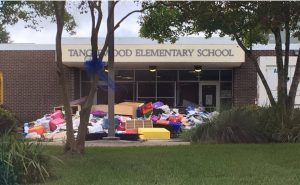
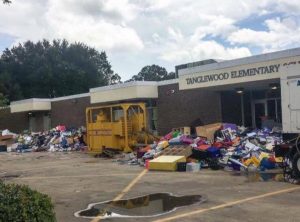
Tanglewood Elementary in Baton Rouge also suffered devastating flood damage. The library lost nearly everything, as have many classroom libraries. Brittney Banta-Troxclair’s first grade daughter was only in class for one day before the rains began and school had to be closed. Brittney’s home was spared, so she has a safe, dry place to store donations and is working with the librarian on a book drive to begin rebuilding.
Need:
*New and like-new books for grades K-4, including picture books, easy readers, chapter books, graphic novels, nonfiction, and middle grade books of all genres.
*Authors & Illustrators: If you’re sending your own books and would like to sign them, I think that would be lovely for students to see when they get back to school. Either “For Readers of Tanglewood Elementary” or just “For Louisiana Readers” would be great. (Some books may also be distributed to other schools in need.)
Send to:
Brittney Banta-Troxclair
Books for Tanglewood
17186 Benton’s Ferry Ave.
Greenwell Springs, LA 70739
Westside Elementary in Scott, LA
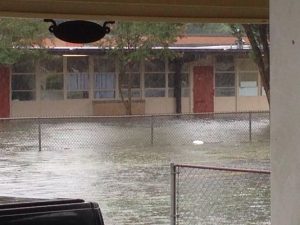
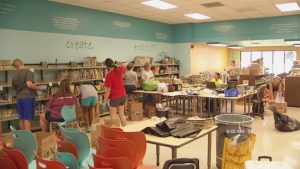
(Photo: Westside Elementary, by Erick Knezek in The Advertiser) (Photo: Westside library, KFLY News10)
Westside Elementary School in Scott, LA was also severely damaged by flooding. The school library lost many books, and K-5 teachers lost most of their classroom libraries. A nearby school in the district is dry and prepared to take donations for Westside now. Truman Early Childhood Education Center is dry and prepared to accept, store, and distribute book donations for grades K-5. Books may also be distributed to other schools in need and to families that lost their books in flooding.
Need:
*New and like-new books for grades K-5, including picture books, easy readers, chapter books, graphic novels, nonfiction, and middle grade books of all genres.
*Authors & Illustrators: If you’re sending your own books and would like to sign them, I think that would be lovely for students to see when they get back to school. Either “For Readers of Westside Elementary” or just “For Louisiana Readers” would be great. (Some books may also be distributed to other schools in need.)
Send to:
Truman Early Childhood Education Center
Attn: Anita Pool
200 Clara Street
Lafayette, La 70501
Sharing and Updates
If you’d like to share this information, please share a link to this blog post, which will be updated as needed. Please do not copy and paste the address for donations. There may come a time when these schools are no longer able to accept donations, and there’s no way to stop that from happening if the information isn’t being updated. Also, we expect to have information about other schools in need soon. As I hear from them and learn about needs and storage abilities, I’ll post updates here, so there will be more opportunities to help in the coming days. If you are a teacher or librarian at another school that suffered damage and you’d like help with book donations, please send me an email via my contact form with information about what you need and when/where it can be sent. Thanks!!





